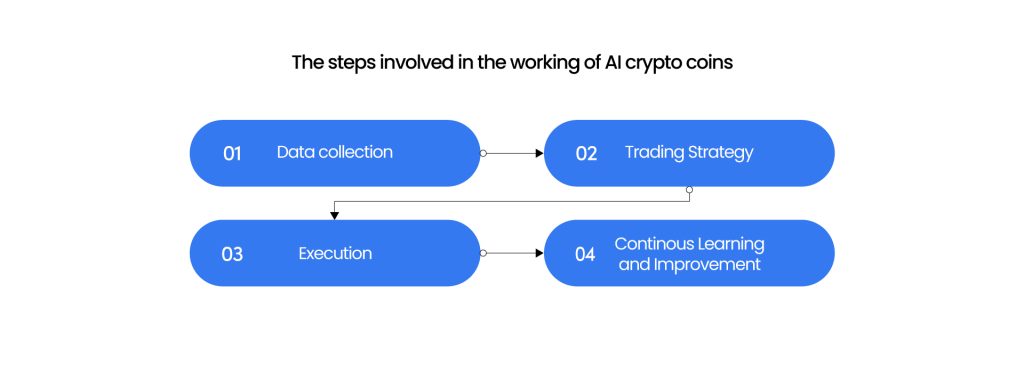
Artificial Intelligence (AI) and cryptocurrency are transforming various sectors, but their impact on sustainability is a growing concern. The potential of AI to revolutionize cryptocurrency operations, including mining and trading, is undeniable. However, understanding the environmental implications of these technologies is paramount. This article delves into the differences between AI and cryptocurrency in the context of sustainability, exploring their environmental footprints and discussing potential solutions.
The Rise of AI and Cryptocurrency
AI’s Transformative Potential
AI is rapidly reshaping industries, offering opportunities for automation, efficiency gains, and enhanced decision-making. Its application extends to cryptocurrency, where AI-powered tools assist in complex market analysis, predictive modeling, and automated trading strategies. This automation, while promising, often necessitates substantial computational resources, frequently leading to energy-intensive processes.
Cryptocurrency’s Environmental Footprint
Cryptocurrency, particularly those using proof-of-work consensus mechanisms, are often criticized for their significant energy consumption. Mining cryptocurrencies, a process required for validating transactions and issuing new coins, consumes vast amounts of electricity, contributing to carbon emissions and raising concerns about environmental sustainability.
Environmental Impact: A Comparative Analysis
AI’s Energy Consumption
While AI’s energy footprint varies depending on the specific application and hardware, it’s crucial to acknowledge the inherent energy needs of complex algorithms and large datasets. Machine learning models, for example, require significant computational power and energy during training and deployment, potentially impacting sustainability efforts. The potential for optimizing AI models and transitioning to more energy-efficient hardware is a key area of ongoing research.
Cryptocurrency Mining’s Energy Demands
The energy consumption associated with cryptocurrency mining varies considerably based on the specific coin. Some cryptocurrencies, using proof-of-stake mechanisms, consume significantly less energy. However, those operating on proof-of-work models require vast amounts of electricity for complex computations involved in block validation. This high energy demand raises significant concerns about the environmental impact of cryptocurrency mining.
Sustainable Practices and Alternative Solutions
AI-Driven Efficiency
AI can play a crucial role in developing more energy-efficient technologies. Researchers are actively exploring algorithms and architectures designed to reduce the energy footprint of AI systems. For instance, techniques like transfer learning and pruning can decrease the computational demands of certain AI tasks. Moreover, optimizing hardware designs for AI can yield significant energy savings.
Addressing the Cryptocurrency Dilemma
Transitioning to Sustainable Crypto
Several innovative approaches are emerging to minimize the environmental impact of cryptocurrency. The development of alternative consensus mechanisms, like proof-of-stake, has gained traction, reducing the energy intensity of cryptocurrency networks. Moving toward decentralized networks powered by renewable energy sources is another promising avenue to address the sustainability concerns.
Regulation and Policy
Governments and regulatory bodies are increasingly recognizing the environmental concerns associated with crypto mining. Policy interventions and regulations can encourage the adoption of sustainable practices within the cryptocurrency industry. This may involve incentivizing the use of renewable energy sources for mining operations or establishing carbon emission standards for mining activities.
The Future of AI and Cryptocurrency Sustainability
Collaborative Efforts
To achieve true sustainability in the AI and cryptocurrency space, collaboration between researchers, developers, and policymakers is essential. Open discussions and shared insights are critical to finding innovative solutions that balance technological advancement with environmental stewardship.
Educating the Public
Raising public awareness about the environmental implications of AI and cryptocurrency is paramount. Transparency and education can help drive responsible development and adoption of these technologies. Open dialogue about the environmental impact is crucial for fostering informed choices.
The Intersection of AI and Sustainability
AI for Environmental Monitoring
AI can effectively monitor and analyze environmental data. Utilizing machine learning algorithms, researchers can track deforestation, pollution levels, and climate change patterns more efficiently and accurately. This real-time data allows for early interventions to mitigate further damage and promote conservation efforts.
AI in Renewable Energy Development
AI can significantly enhance the efficiency of renewable energy sources like solar and wind power. By optimizing energy production and storage, AI can ensure more efficient use of these resources and contribute to reducing our dependence on fossil fuels.
The Evolving Landscape of Cryptocurrency and AI
Decentralized Finance (DeFi)
DeFi platforms leverage AI for various applications, including automated lending, trading, and risk management. However, the energy consumption associated with these decentralized transactions requires careful consideration.
The Blockchain Technology
The blockchain technology underpinning cryptocurrencies provides transparency and security. AI can play a vital role in enhancing the security and efficiency of blockchain networks without increasing energy consumption.
Regulatory Frameworks and Incentives
Policy Measures
Governments are increasingly recognizing the environmental impact of cryptocurrency and AI. Establishing regulations and incentives for businesses to adopt sustainable practices is crucial. Policies might encourage the use of renewable energy sources for crypto mining operations or set emission standards for AI-powered data centers.
Investment in Research
Government funding for research aimed at developing sustainable AI technologies and energy-efficient blockchain solutions is needed. Investments in this area will foster innovation and contribute to the responsible development of these technologies.
Frequently Asked Questions
Q: How does AI affect cryptocurrency mining?
A: AI-powered tools can optimize mining processes by identifying optimal hardware configurations and predicting profitable mining opportunities. However, the energy-intensive nature of these processes must be addressed responsibly. Many mining operations still rely on fossil fuels, highlighting the need for cleaner alternatives.
Q: What are some solutions for sustainable cryptocurrency mining?
A: A shift toward proof-of-stake consensus mechanisms, coupled with renewable energy adoption for mining operations, are viable solutions. Furthermore, ongoing research in developing more energy-efficient algorithms and hardware can also minimize the environmental impact of cryptocurrency.
In conclusion, the integration of artificial intelligence (AI) and cryptocurrency is a complex and evolving landscape with significant implications for sustainability. While AI can enhance cryptocurrency systems, the environmental impact of cryptocurrency mining remains a critical consideration. Moving forward, a deeper understanding of the environmental impact of AI-powered crypto solutions and the exploration of sustainable alternatives for both are crucial for achieving a future where these technologies coexist with a healthy planet. To learn more, explore further resources on sustainable AI and cryptocurrency development practices.